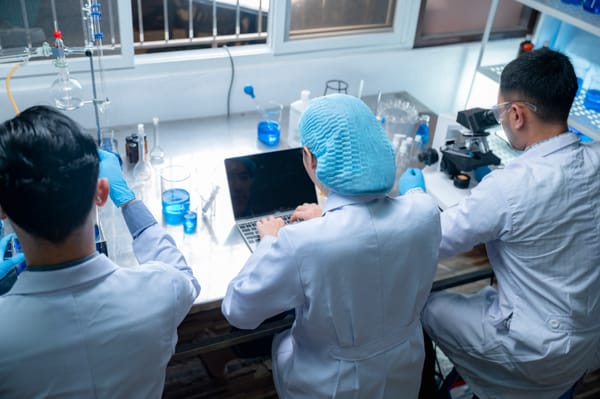This week in Science (27/05/2022)
Electrical gene control and water on the moon

From Imperial
Researchers can turn genes on and off using electrical signals
Researchers have developed a method which allows gene expression to be accurately and precisely controlled through the supply and removal of electrons. This has wide-ranging applications, from biomedical implants in the body to reactions in large bioreactors that produce drugs. The PsoxS promoter in bacteria was altered to respond more strongly to electrical stimuli, which allows it to activate or repress gene expression. The method was tested using the “glowing” protein from jellyfish and electrons to induce its expression in bacteria, causing the cells to glow when the system was “on”.
Imperial and QMUL join forces against Parkinson’s
Charco Neurotech, founded in 2019 by then-Imperial student Lucy Jung, will work with Queen Mary University of London to test its device which alleviates the symptoms of Parkinson’s. The device, called CUE1, can be worn on the patient’s chest and delivers localised vibrations which send signals to the nervous system, which pre-clinical trials suggest help reduce the symptoms of Parkinson’s. Parkinson’s is an incurable brain disorder that causes difficulties with movement. Current treatment is based around drugs that can have side effects and whose efficiency can wane over time.
From around the world
Biocrusts in the fight against dust
Biocrusts reduce global dust emissions by 60%, new research suggests. Biocrusts are communities of organisms such as fungi, lichens, Cyanobacteria and other microorganisms which form a “living skin” in the soil surface of many arid regions. These communities secrete adhesive compounds which stick soil together. They cover around 12% of the land’s surface, and are now estimated to prevent around 700 teragrams of dust entering the air each year. Dust can carry good nutrients for plants, but can also decrease water and air quality. The researchers looked at data on wind velocities needed to erode dust from different soil types, and calculated how biocrust coverage affected dust generation. Wind velocities needed to erode dust from soils shielded by biocrust versus bare soils was around 4.8 times greater. However, Biocrusts are in danger, with climate change and land-use shifts predicted to result in biocrust losses of 25-40% by 2070.
Water on the moon may have come from ancient volcanoes
Since the existence of ice on the moon was confirmed in 2009, scientists have debated how it got there. New research suggests that 2 billion years of volcanic eruptions could have created atmospheres with water vapour which settled as ice at the poles. When volcanic eruptions were common, they occurred around once every 22,000 years. Based on samples of ancient lunar magma, researchers found that water constituted around ⅓ of the gases released in volcanic eruptions, and from that calculated that eruptions released upward of 20 quadrillion kg of water vapour in total. Some of this vapour would have been lost to space, but in the cold poles, it could have stuck to the surface and froze into the ice we see today. Computer simultions estimate that around 40% of the total erupted water vapour could have accumulated as ice. The new calculations also indicate that each new eruption triggered a new atmosphere, which then lingered for around 2,500 years before disappearing until the next eruption.








